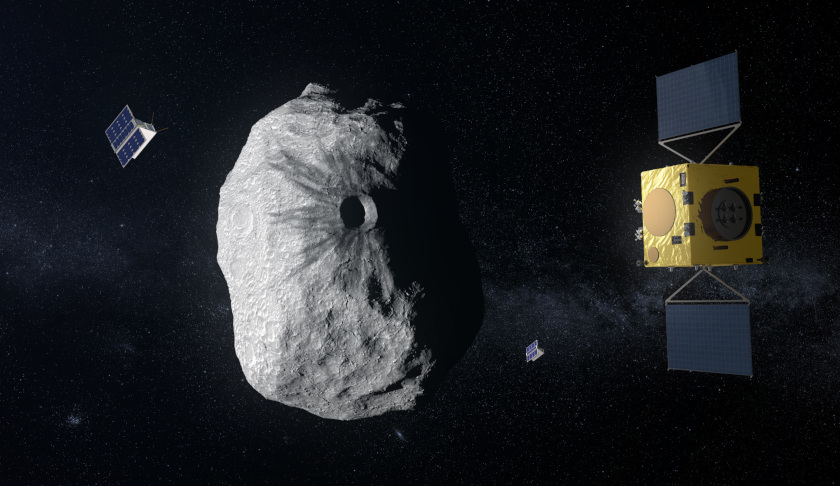
Bennu is the target of NASA’s Origins, Spectral Interpretation, Resource Identification, Security-Regolith Explorer (OSIRIS-REx) mission, which began orbiting the asteroid on 31 December. Bennu, which is only slightly wider than the height of the Empire State Building, may contain unaltered material from the very beginning of the solar system.
Bennu also revealed itself to be more rugged than expected, challenging the mission team to alter its flight and sample collection plans, due to the rough terrain.
Dante Lauretta, OSIRIS-REx principal investigator at the University of Arizona, Tucson, said, "The discovery of plumes is one of the biggest surprises of my scientific career, the rugged terrain went against all of our predictions. Bennu is already surprising us, and our exciting journey there is just getting started."
Shortly after the discovery of the particle plumes on 6 January, the mission science team increased the frequency of observations, and subsequently detected additional particle plumes during the following two months. Although many of the particles were ejected clear of Bennu, the team tracked some particles that orbited Bennu as satellites before returning to the asteroid’s surface.
The OSIRIS-REx team initially spotted the particle plumes in images while the spacecraft was orbiting Bennu at a distance of about one mile (1.61 kilometres). Following a safety assessment, the mission team concluded the particles did not pose a risk to the spacecraft. The team continues to analyse the particle plumes and their possible causes.
OSIRIS-REx launched in 2016 to explore Bennu, which is the smallest body ever orbited by spacecraft. Studying Bennu will allow researchers to learn more about the origins of our solar system, the sources of water and organic molecules on Earth, the resources in near-Earth space, as well as improve our understanding of asteroids that could impact Earth.
Lori Glaze, acting director of the Planetary Science Division at NASA Headquarters in Washington, said, "The first three months of OSIRIS-REx’s up-close investigation of Bennu have reminded us what discovery is all about — surprises, quick thinking and flexibility. We study asteroids like Bennu to learn about the origin of the solar system. OSIRIS-REx’s sample will help us answer some of the biggest questions about where we come from."
The OSIRIS-REx team also didn’t anticipate the number and size of boulders on Bennu’s surface. From Earth-based observations, the team expected a generally smooth surface with a few large boulders. Instead, it discovered Bennu’s entire surface is rough and dense with boulders.
The higher-than-expected density of boulders means that the mission’s plans for sample collection, also known as touch-and-go, need to be adjusted. The original mission design was based on a sample site that is hazard-free, with a 25-metre radius. However, because of the unexpectedly rugged terrain, the team hasn’t been able to identify a site of that size on Bennu. Instead, it has begun to identify candidate sites that are much smaller in radius.
Receive the latest developments and updates on Australia’s space industry direct to your inbox. Subscribe today to Space Connect here.









